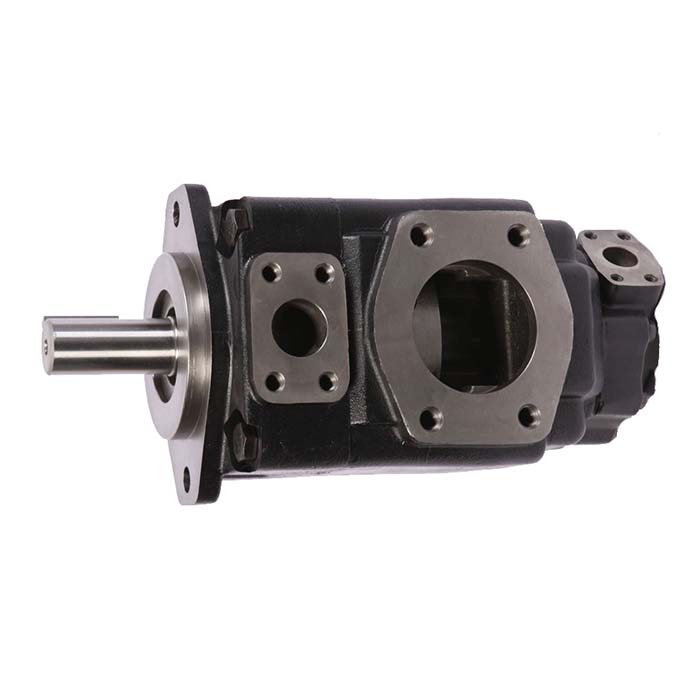The difference between hydraulic motor and hydraulic pump
The similarities between hydraulic motors and pumps
1. A hydraulic pump is a device that converts the mechanical energy
of an electric motor into pressure energy, and works by outputting flow and pressure.
In contrast, hydraulic motors are devices that convert pressure oil
into mechanical energy and operate by outputting torque and speed.
Therefore, a hydraulic pump can be seen as an energy device,
while a hydraulic motor is an executing component, with some functional differences between the two.
2.From a structural perspective, hydraulic motors and pumps have similar composition elements.
They all contain a closed and periodically variable volume working chamber, as well as corresponding oil distribution mechanisms.
These structural elements together constitute the basic framework of hydraulic motors and pumps.
3.The working principle of hydraulic motors and pumps is to use changes in the volume of the working chamber to absorb and discharge oil.
The hydraulic pump absorbs oil when the working chamber volume increases, and discharges high-pressure oil when the volume decreases;
When the volume of the hydraulic motor increases, it enters high-pressure oil, and when the volume decreases, it discharges low-pressure oil.
Differences between hydraulic motors and pumps
1. A hydraulic pump is a conversion device that converts the mechanical energy
of an electric motor into hydraulic energy, and works by outputting flow and pressure.
A hydraulic pump usually consists of a drive shaft, a rotor (such as gears, blades, plungers, etc.), and a driving device.
Its main function is to inhale liquids and provide high-pressure fluid output.
Hydraulic pumps are usually used to drive the executing components in hydraulic systems, such as hydraulic motors, hydraulic cylinders, etc.
2. A hydraulic motor is a conversion device that converts
the pressure energy of a liquid into mechanical energy, and works by outputting torque and speed.
Hydraulic motors typically consist of fixed shafts, rotors (such as gears, blades, plungers, etc.), and driving devices.
Its main function is to provide rotational power and power through the output shaft.
Hydraulic motors are typically used in applications that require rotation or provide driving force, such as excavators, cranes, etc.
3. The hydraulic motor has inlet, outlet, and leakage ports. The oil inlet is used to receive high-pressure liquid,
The oil outlet is used to output low-pressure liquid, while the leakage port is used to discharge the returned liquid.
Hydraulic pumps generally only have inlet and outlet ports, without independent leakage ports.
4. The volumetric efficiency of hydraulic motors is usually low,
which means there will be energy loss during the process of converting liquid into mechanical energy.
This is because during the operation of hydraulic motors,
there may be energy losses such as leakage, friction,
and internal fluid resistance during the conversion process of the liquid.
5. The working speed of hydraulic pumps is usually high
to meet the needs of different systems and provide sufficient flow and pressure.
The output speed of hydraulic motors is relatively low
because of their high torque requirements, mainly used to provide sufficient power and driving force
Classification of hydraulic pumps
According to structure, there are three major categories: plunger pumps, Gear Pumps, and Vane Pumps.
According to whether the displacement can be adjusted,
it can be divided into fixed displacement pump and variable displacement pump.
According to the direction of oil discharge, it is divided into one-way pump and two-way pump.
Classified by pressure level: low pressure, medium pressure, medium high pressure, and ultra-high pressure pumps.
Classification of hydraulic motors
Classified by structural form: gear type, blade type, and plunger type.
Classified by speed and torque range: high-speed motor and low-speed motor.
Saivs brand
- SD4/SD5/SD11/SD14/SD18 Hydraulic Directional Control Valves
- Radial piston motors Hagglunds CB
- Gm7 series low speed rpm high torque hydraulic radial piston motor
- Counterbalance Valves CBCG
- A4VF500/A4VG28~71/A4VTG71/A4VG90~250/A4VHW90 rexroth hydraulic pump parts
- Rexroth Throttle and throttle check valve MG MK MK6G MK8G MK10G MK15G MK20G MK25G MK30G
- Two Way Two Position Normally Closed SV08-2NCSP-L-M
- Two-post Car Lift
- Smaller Pressure Fluctuation Denison Vane Parker Pump T6C For Sale
- Small Hydraulic Winch 10 Ton Ship and Deck Machinery Used
